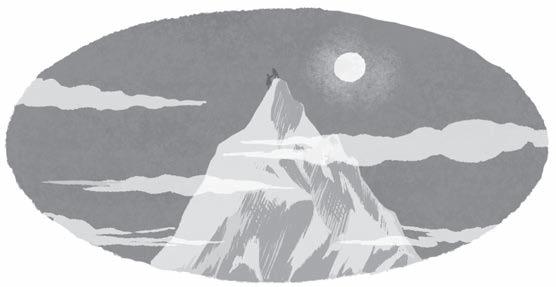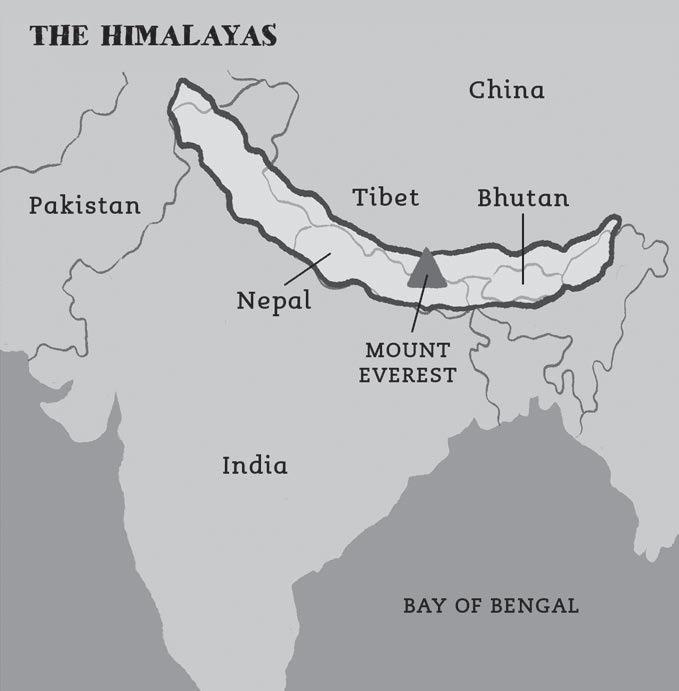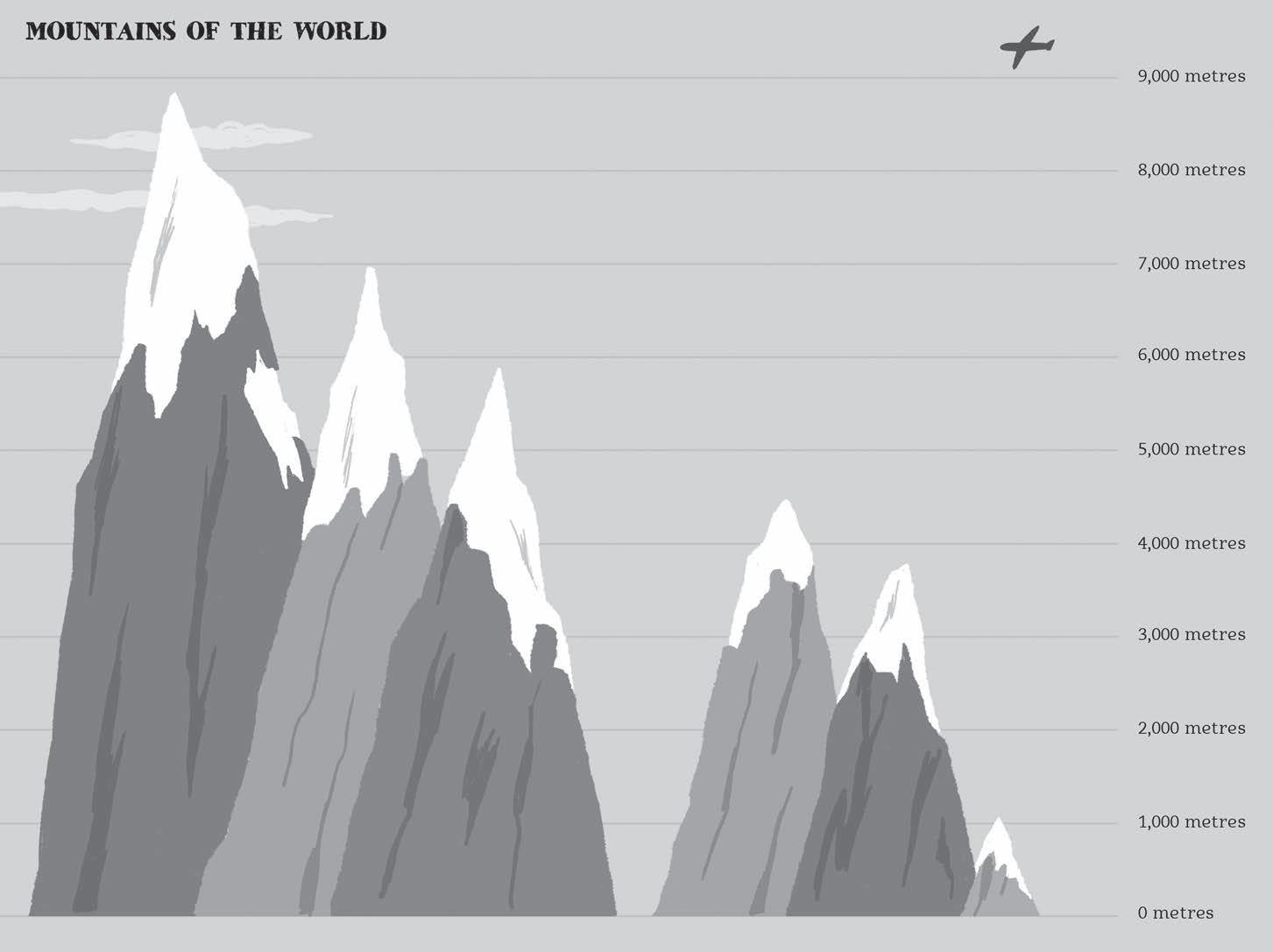
ALSO BY DAVID LONG …
Survival in Space: The Apollo 13 Mission
Tragedy at Sea: The Sinking of the Titanic
Tutankhamun’s Treasure:
Discovering the Secret Tomb of Egypt’s Ancient King


First published in 2022 in Great Britain by Barrington Stoke Ltd
18 Walker Street, Edinburgh, EH3 7LP
www.barringtonstoke.co.uk
Text © 2022 David Long
Illustrations © 2022 Stefano Tambellini
The moral right of David Long and Stefano Tambellini to be identified as the author and illustrator of this work has been asserted in accordance with the Copyright, Designs and Patents Act, 1988
All rights reserved. No part of this publication may be reproduced in whole or in any part in any form without the written permission of the publisher
A CIP catalogue record for this book is available from the British Library upon request
ISBN: 978-1-80090-094-3
Printed by Hussar Books, Poland
For university friends. PER ARDUA AD ALTA
Contents 1. Why Everest? 1 2. Trying but Failing 11 3. Race for the Top 21 4. First Wales then Nepal 29 5. Who are the Sherpas? 37 6. Earthquakes and Ice Falls 47 7. So Near and Yet So Far 58 8. Success at Last 66 9. News Finally Reaches London 74 10. Everest Today 77
WHY EVEREST?

Everest is the world’s highest mountain, reaching 8,849 metres above sea level. It has attracted great interest from people around the world for more than 100 years. This isn’t surprising. Mount Everest towers like a huge icy giant over the Himalayas – an enormous
1 1
mountain range in Asia that’s more than 2,000 kilometres long.
The Himalayas stretches over six countries: China, India, Bhutan, Nepal, Tibet and Pakistan.

2
The area has always been a magical place for the millions of people living nearby. Ancient stories and legends about the mountains are important in their religious lives. In Tibet they call the highest peak of the Himalayas Chomolungma, meaning “Goddess Mother of the World”. The Nepali word, Sagarmatha, means “Peak of Heaven”.
The English name, Mount Everest, is more famous than the other names but nowhere near as old. It only dates back to Victorian times, when much of Asia was part of the British Empire. Many of those who lived in and around the Himalayas were ruled by Great Britain, and an official from London called George Everest was in India producing new maps that were more accurate than before.
There were so many huge mountains in the Himalayas that no one could tell which was the highest. It took until 1852 for the correct
3
one to be identified, by a talented Indian mathematician called Radhanath Sikdar.
For a while this highest point was just shown on maps as “Peak B” or “Peak XV”. But then someone suggested renaming it after George Everest. George said no to the idea as soon as he heard it. He had never set foot on this mountain or even seen it from a distance.
At this time it is unlikely that any Europeans had been near the mountain, and George Everest was worried that the people living in the region would find this new name difficult to pronounce. Others did want George’s surname to be used, however, and so it was given to the mighty mountain. Everest is still the name used most around the world today, but the people living in the Himalayas don’t often refer to it this way.
4
There was a lot more interest in the mountain after it had been identified as the highest peak on Earth. The nineteenth and early twentieth centuries were important times for science and discovery. Explorers and adventurers risked their lives as they travelled thousands of kilometres up great rivers like the Nile and the Amazon. Others attempted to walk to the North and South Poles across the vast frozen wastelands. Some explorers trekked over the awfully hot, dry deserts of Asia and Africa in search of ancient cities.
Some of the most determined adventurers were also keen mountain climbers –mountaineers. Rock climbing was a fairly new sport, but it had become very popular, especially in Britain. Climbers had already reached the highest and hardest European peaks by the time Mount Everest was given its new name. The best mountaineers were looking for new and more exciting challenges at the beginning of the twentieth century.
5

The Himalayas looked like the perfect place to test their skills and their courage. This part of Asia is home to nine of the world’s ten highest peaks. Even the relatively small mountains in the Himalayas are hundreds or thousands of metres taller than anything in Europe and America.
For example, the Matterhorn on the border between Italy and Switzerland is one of the most famous mountains in Europe – and the hardest to climb. Hundreds of people have died trying to reach the summit. Yet the Matterhorn is only about half the height of Mount Everest, at 4,478 metres.
6

Mount Everest stretches nearly five and a half miles high – almost nine kilometres. Planes fly around this high, far above the clouds. It’s easy to see why the mountaineers began to find something magical about the mountain too, just like the locals, but for them it had nothing to do with religion. The mountaineers wanted to reach places no one else had reached before and achieve something nobody else had achieved. The difficulty and dangers of such a long climb made Everest more exciting to them than any other mountain. They wanted to stand on what had become known as “the roof of the world”.
7
Aconcagua: 6,961m
ARGENTINA, S.AMERICA
The highest mountain in the western hemisphere
Mount Everest: 8,849m
NEPAL AND TIBET
The highest mountain in the world

Mount Kilimanjaro: 5,895m
TANZANIA, AFRICA
The highest mountain in Africa
Commercial planes: 11,000m

Matterhorn: 4,478m
SWITZERLAND AND ITALY, EUROPE
The highest mountain in Europe
Mount Fuji: 3,776m
JAPAN, ASIA
The highest mountain in Japan
Mount Snowdon: 1,085m
WALES, UK
The mountain on which Hunt and his team trained







